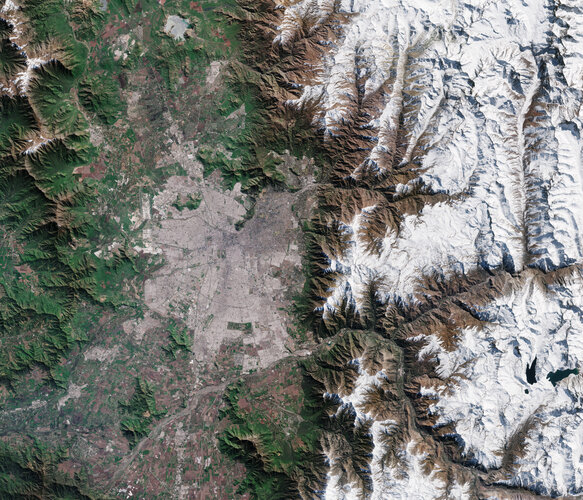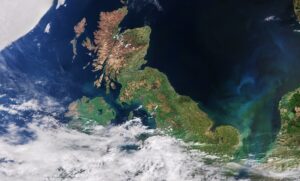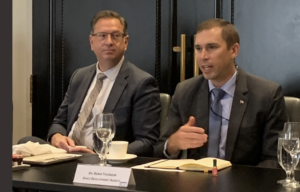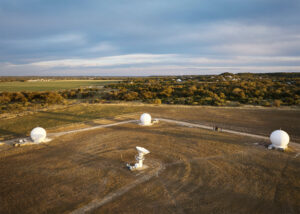Airbus and Space Compass to target Japanese market for mobile and EO solutions
Friday, 11 November 2022 10:06 Airbus HAPS Connectivity Business (Airbus HAPS) has signed a Letter of Intent (LOI) with Space Compass Corporation of Japan (Space Compass) for a cooperation agreement to service the Japanese market with mobile connectivity and earth observation services from the Stratosphere with Airbus' record breaking Zephyr platform.
Samer Halawi, Chief Executive of Airbus HAPS, commented on the agreem
Airbus HAPS Connectivity Business (Airbus HAPS) has signed a Letter of Intent (LOI) with Space Compass Corporation of Japan (Space Compass) for a cooperation agreement to service the Japanese market with mobile connectivity and earth observation services from the Stratosphere with Airbus' record breaking Zephyr platform.
Samer Halawi, Chief Executive of Airbus HAPS, commented on the agreem NOAA satellite, NASA LOFTID heat shield experiment launched into orbit
Friday, 11 November 2022 10:06 The third of five advanced NOAA satellites launched into orbit early Thursday from California's Vandenberg Space Force Base. The Joint Polar Satellite System-2 will provide a continuous stream of vital weather data.
"The need for advanced satellites, such as JPSS-2, to accurately predict weather and climate has never been greater," said Michael C. Morgan, assistant secretary of commerce
The third of five advanced NOAA satellites launched into orbit early Thursday from California's Vandenberg Space Force Base. The Joint Polar Satellite System-2 will provide a continuous stream of vital weather data.
"The need for advanced satellites, such as JPSS-2, to accurately predict weather and climate has never been greater," said Michael C. Morgan, assistant secretary of commerce Piece of Challenger space shuttle found off Florida coast
Friday, 11 November 2022 10:06 Divers searching for a World War II-era aircraft near the Bermuda Triangle have found a piece of an entirely different sort of vessel: part of the US Challenger space shuttle that exploded soon after takeoff in 1986.
The shuttle burst apart just dozens of seconds after launching from Florida, killing seven crew members, including the teacher Christa McAuliffe who had won a national screening
Divers searching for a World War II-era aircraft near the Bermuda Triangle have found a piece of an entirely different sort of vessel: part of the US Challenger space shuttle that exploded soon after takeoff in 1986.
The shuttle burst apart just dozens of seconds after launching from Florida, killing seven crew members, including the teacher Christa McAuliffe who had won a national screening Ultrathin solar cells promise improved satellite performance
Friday, 11 November 2022 10:06 Most space satellites are powered by photovoltaic cells that convert sunlight to electricity. Exposure to certain types of radiation present in orbit can damage the devices, degrading their performance and limiting their lifetime.
In Journal of Applied Physics, by AIP Publishing, scientists from the University of Cambridge proposed a radiation-tolerant photovoltaic cell design that feature
Most space satellites are powered by photovoltaic cells that convert sunlight to electricity. Exposure to certain types of radiation present in orbit can damage the devices, degrading their performance and limiting their lifetime.
In Journal of Applied Physics, by AIP Publishing, scientists from the University of Cambridge proposed a radiation-tolerant photovoltaic cell design that feature BeiDou making mark among navigation systems
Friday, 11 November 2022 10:06 China's BeiDou Navigation Satellite System (BDS) will be further developed and feature better compatibility and interoperability coordination with the world's other navigation systems, including the GPS system of the United States, Russia's GLONASS system and the Galileo system of the European Union, an official said during the World Internet Conference Wuzhen Summit in Zhejiang province on Wedn
China's BeiDou Navigation Satellite System (BDS) will be further developed and feature better compatibility and interoperability coordination with the world's other navigation systems, including the GPS system of the United States, Russia's GLONASS system and the Galileo system of the European Union, an official said during the World Internet Conference Wuzhen Summit in Zhejiang province on Wedn Viasat and Cobham Satcom announce strategic collaboration on maritime connectivity system
Friday, 11 November 2022 10:06 Viasat Inc. (NASDAQ: VSAT) and Cobham Satcom have announced that the companies are collaborating on a new, advanced satellite connectivity solution for the maritime and energy industries in preparation for the launch of Viasat's next generation satellite constellation, ViaSat-3.
The connectivity system, which will include a portfolio of groundbreaking antenna systems from Cobham Satcom, is
Viasat Inc. (NASDAQ: VSAT) and Cobham Satcom have announced that the companies are collaborating on a new, advanced satellite connectivity solution for the maritime and energy industries in preparation for the launch of Viasat's next generation satellite constellation, ViaSat-3.
The connectivity system, which will include a portfolio of groundbreaking antenna systems from Cobham Satcom, is WA researchers lead the way in hi-tech communications
Friday, 11 November 2022 10:06 The researchers, from the International Centre for Radio Astronomy Research (ICRAR), have been working on this project for two years, with their findings published in the internationally respected science journal, Nature Scientific Reports.
Although optical communications have been in use since the 1980's, government and industry have continued to rely on radio transmission technology in s
The researchers, from the International Centre for Radio Astronomy Research (ICRAR), have been working on this project for two years, with their findings published in the internationally respected science journal, Nature Scientific Reports.
Although optical communications have been in use since the 1980's, government and industry have continued to rely on radio transmission technology in s D-Orbit signs Framework Agreement with NPC Spacemind
Friday, 11 November 2022 10:06 The space transportation and logistics company D-Orbit has announced the signing of a framework contract with NPC SPACEMIND, an Italian space company specializing in smaller satellite hardware, complete platforms, and end-to-end mission services.
The contract covers the launch and deployment of FUTURA-SM1 and FUTURA-SM3, a 3U and a 6U CubeSats respectively, which will be integrated into NP
The space transportation and logistics company D-Orbit has announced the signing of a framework contract with NPC SPACEMIND, an Italian space company specializing in smaller satellite hardware, complete platforms, and end-to-end mission services.
The contract covers the launch and deployment of FUTURA-SM1 and FUTURA-SM3, a 3U and a 6U CubeSats respectively, which will be integrated into NP Arralis to launch new beam steering antenna
Friday, 11 November 2022 10:06 Arralis is pleased to announce the launch of our new Ka-band Phased Array Beam Steering Antenna at Space Tech Expo Europe.
Our low profile, active Phased Array Beam Steering Antenna has many vital applications for providing satellite communications on the move for aviation and ground communications in remote areas.
b>Key benefits of Arralis Ka-band Beam Steering Antenna br> /b>
The
Arralis is pleased to announce the launch of our new Ka-band Phased Array Beam Steering Antenna at Space Tech Expo Europe.
Our low profile, active Phased Array Beam Steering Antenna has many vital applications for providing satellite communications on the move for aviation and ground communications in remote areas.
b>Key benefits of Arralis Ka-band Beam Steering Antenna br> /b>
The Earth from Space: Santiago, Chile
Friday, 11 November 2022 08:00
The Copernicus Sentinel-2 mission captured this image of Santiago – the capital and largest city of Chile.
Momentus upbeat about second Vigoride mission
Thursday, 10 November 2022 23:04
Momentus says it has “higher confidence” in its second space tug set to launch in December after fixing problems encountered with its first vehicle launched earlier this year.
The post Momentus upbeat about second Vigoride mission appeared first on SpaceNews.
UK grants Starlink and Telesat NGSO licenses
Thursday, 10 November 2022 23:02
The United Kingdom gave SpaceX permission Nov. 10 to expand its Starlink satellite broadband network in the country, while also granting a license to Telesat for a competing constellation bound for non-geostationary orbit.
Advanced Space wins $72 million Air Force contract for lunar experiment
Thursday, 10 November 2022 21:41
The Air Force Research Laboratory awarded a $72 million contract to Advanced Space to develop an experimental spacecraft to monitor deep space, far beyond Earth’s orbit.
The post Advanced Space wins $72 million Air Force contract for lunar experiment appeared first on SpaceNews.
Space Development Agency still hoping to launch satellites next month, ‘but there’s risk’
Thursday, 10 November 2022 20:59
The Space Development Agency remains optimistic it will launch next month the first satellites of a planned mesh network of sensors and communications nodes in low Earth orbit
The post Space Development Agency still hoping to launch satellites next month, ‘but there’s risk’ appeared first on SpaceNews.
Apple lays the groundwork for emergency SOS via satellite service
Thursday, 10 November 2022 20:19
Apple said Nov. 10 its $450 million investment in an SOS via satellite service has helped Globalstar upgrade ground stations across the United States and elsewhere with high-power antennas.
The post Apple lays the groundwork for emergency SOS via satellite service appeared first on SpaceNews.

